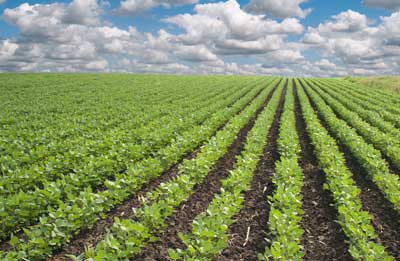
-
Early April planted soybeans require different weed management strategies than later plantings
-
By starting clean, using preemergence herbicides and timely spraying approved postemergence herbicides, we can achieve season long weed control.
-
Be aware that the residual herbicides recommended with early planted soybeans, may be different than those recommended with later planting, and that additional residual herbicide applications may be necessary when planting early.
- Be sure not to exceed the maximum yearly herbicide rates as stated on the herbicide labels.
Planting has already started in the Midwest with both corn and soybeans being planted simultaneously. Early planted soybeans are becoming more popular each year because of the higher yields associated with a longer time period to capture solar radiation. When planting soybeans in early April, there are a couple of additional herbicide considerations to help maintain a weed-free field for the entire season. The first would be the number of applications it may take to get complete weed control; more applications may be needed in early planted soybean fields. The second one would be preemergence herbicide selection; some herbicides may be better suited for the cold, wet conditions that are prevalent when planting early.
Weed Management Steps in Early April Planted Soybeans
1. Start Clean
Make sure that there are no weeds in the field at the time of planting by using either tillage or burndown herbicides.
2. Apply Preemergence Residual Herbicides
While we know many of our driver weeds, such as waterhemp, typically aren’t the first emerging weeds in the spring, a residual herbicide is still necessary. The residual herbicide chosen will differ when planting in early April versus late April. The group 15 herbicides (acetachlor, s-metolachlor, dimethenamid-P, pyroxasulfone) may provide the most consistent control of small seeded broadleaf weeds while maximizing crop safety in the cold conditions that will be present over the next few weeks. As we plant soybeans closer to the last week of April, when the temperatures tend to be a little warmer, the addition of PPO herbicides (flumioxazin and sulfentrazone) also become good options for waterhemp control.
3. More Residual
An additional residual herbicide is needed for pigweed control just before they begin to emerge. This may be the last week of April or the first week of May. If the weather remains cool, these applications may be made right after, or potentially before, soybean emergence. Even if soybeans have not emerged, the use of the flumioxazin or sulfentrazone would not be recommended, as the labels require them to be applied within 3 days of planting. The labeled herbicides to use would be the group 15 herbicides alone or tank mixed with products containing fomesafen as the active ingredient, for added broad spectrum residual. If there are some weeds that have already emerged, add the appropriate postemergence herbicides and adjuvants.
4. Apply Postemergence Herbicides
A postemergence herbicide will be necessary to control emerged weeds later in the spring, probably towards the end of May. Choose the postemergence herbicide based on the weed species present and the soybean trait planted. In addition, a 3rd residual herbicide application may be needed at this time if the soybeans are not close to canopy. Remember to consult herbicide labels to avoid exceeding the maximum yearly amount of herbicide allowed.
While early April planted soybeans may require some additional attention and different weed control practices, the measures stated above will help maintain weed-free fields throughout the season. For additional information, contact your local FS Crop Specialist. Have a safe spring and happy spraying!